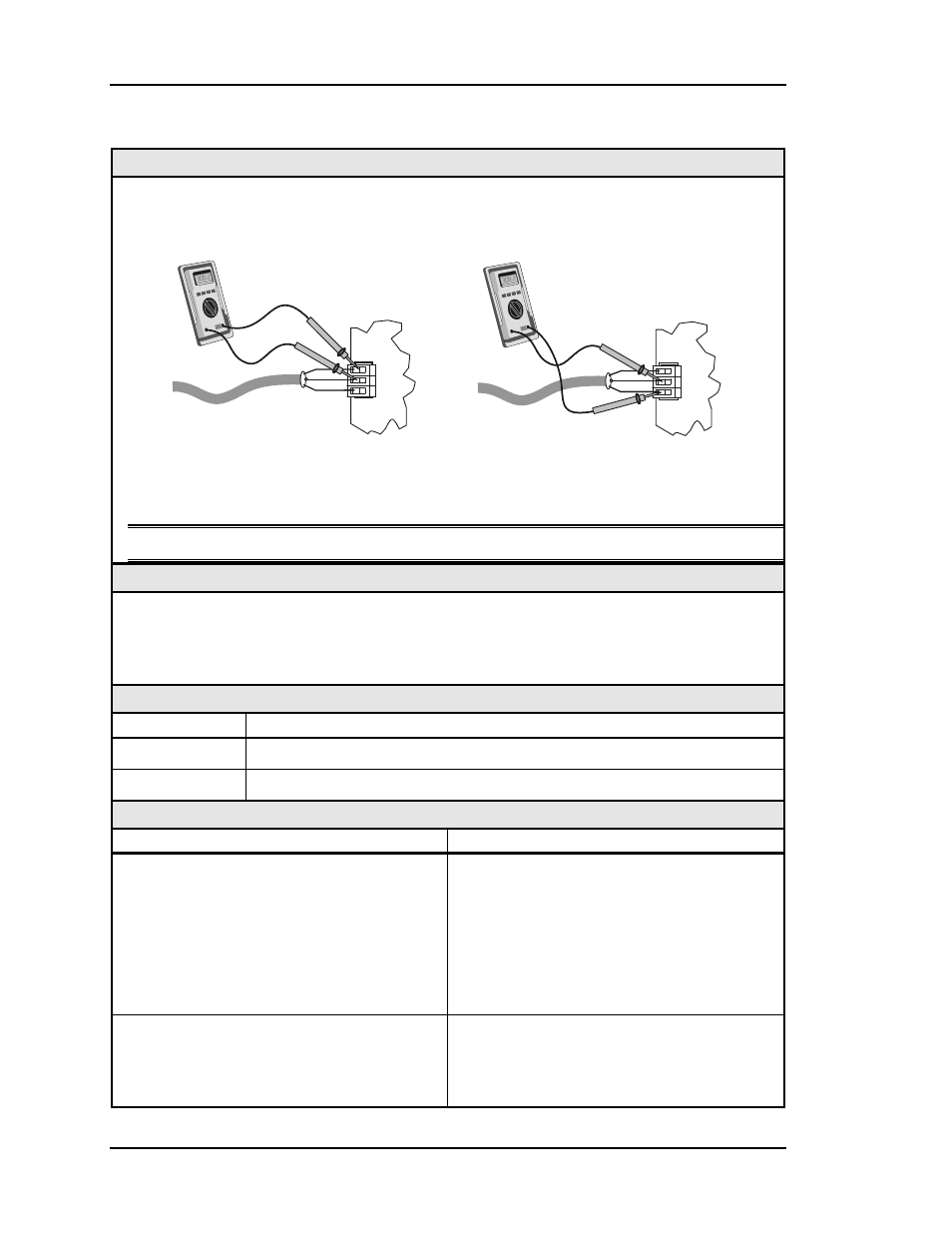Auto-Zone Control Systems Auto-Zone CV & CV-EX Systems Installation & Operation (Version 01C) User Manual
Page 108

Section 4
Auto-Zone CV & CV-EX
4-30
Start-Up and Troubleshooting
Checking Local Loop at a CV Controller – CV & CV-EX
Diagram
Meter Set To Read DC Volts
COMM
LOOP
T
SHLD
R
+
-
T
R
SHLD
+
-
+2.9 VDC
to
+3.1 VDC
COMM
LOOP
T
SHLD
R
+
-
T
R
SHLD
+
-
+1.9 VDC
to
+2.1 VDC
T to SHLD
CV Controller
CV Controller
R to SHLD
The indicated readings are typical of a normal operating system. Actual readings may vary
slightly due to the number of units installed and other factors. Any significant deviation
from these values generally indicates a problem.
Note: These tests assume that a CommLink IV is connected and powered up.
Overview
Proper loop voltages are essential for reliable communications. It is normal to see fluctua-
tions on an operating communications loop. The average value should be close to the
acceptable range described below. Values will vary upon initial powerup for about 30-45
seconds. The voltages may fluctuate as normal communications occur.
Measurements
Local Loop
Acceptable Range
T - SHLD
2.9 - 3.1 Volts DC
R - SHLD
1.9 - 2.1 Volts DC
Action
Condition Action
If meter reads between 2.4 VDC and 2.5
VDC.
The Comm Loop “floats” at 2.4 - 2.5 VDC
when only controllers are connected to the
loop. When a CommLink IV is connected,
it will “bias” each side of the loop to the
values listed above.
1. No CommLink IV is connected and
powered up.
2. If a CommLink IV is connected, look for
“open” wiring.
If voltages are too high or too low on either
side.
One or more devices connected to this loop
have damaged Comm Driver chips.
Replace the driver chip. See Figure 4-10
& 4-11.